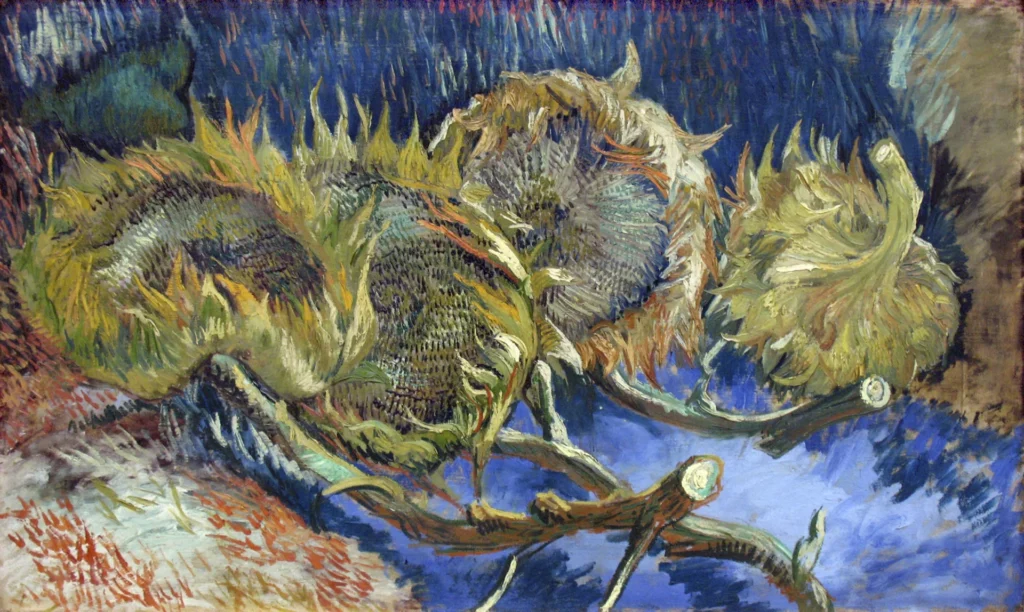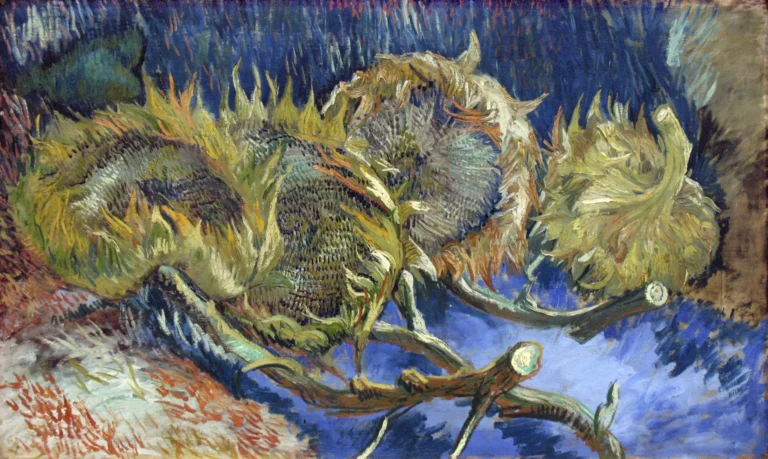Four Withered Sunflowers (1887)
Four Withered Sunflowers or Four Sunflowers Gone to Seed is a pivotal painting by Vincent van Gogh, completed in 1887. Depicting four life-sized sunflowers that have wilted and gone to seed, the work stands out for its absence of a vase or background. Instead, Van Gogh’s swirling brushstrokes and vibrant contrasts between warm and cool colors create a powerful visual impact and highlight the natural progression of decay in these flowers. Part of his series of color studies, it exemplifies Van Gogh’s innovative style during his time in Paris.
1887
About the Artwork
Did You Know
Liked what you see? Add it to your collection.
Enjoyed reading? Share it.
... continued
Composition and Style
The painting features four cut sunflowers that have gone to seed, depicted life-sized and filling the entire canvas. Unlike many of his other flower still lifes, this work does not include a vase, pot, or any background elements. The focus is solely on the sunflowers themselves.
Colour Studies
This painting is part of Van Gogh's series of colour studies that he conducted while in Paris. During this period, he was experimenting with colour oppositions, such as blue with orange, red with green, and yellow with violet. He aimed to achieve intense colour contrasts and harmonize extreme tones, rather than opting for a grey harmony.
Technique and Impact
The painting is characterized by swirling brushstrokes in all directions, which add to the dynamic and expressive nature of the work. The combination of warm and cold colours in contrasting tones, along with the undefined space in which the sunflowers are placed, makes this painting a highpoint of Van Gogh's Parisian period.
Significance
Four Withered Sunflowers stands out as an unusual flower still life due to its simplicity and focus on the natural decay of the flowers. It reflects Van Gogh's innovative approach to colour and composition, making it a notable piece in his body of work.










